Producing, testing and researching in Cologne
17th June 2008
Source:
igus UK Limited
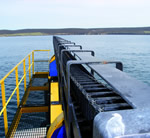
With the overall increase in turnover of 16.5 percent, igus®, manufacturer of tribo-plastic components and systems, has closed its books on the business year 2007. The consolidated group turnover has increased to 276 million euros from across its 26 branches around the world. igus® manufactures, tests and researches within a vast area of 20,000 m² at its headquarters in Cologne. In November 2007 construction work began on increasing factory space, as Managing Director Frank Blase reported at the Hanover Fair.
At a press conference, Blase took the opportunity to present newly developed products from the range of plastic energy chains, special cables and polymer plain bearings. They all exhibit the following main properties: minimising maintenance, increasing the service life of machines and finally making assembly and use faster and easier. Construction work started on the new production areas in November 2007. The factory is being expanded by more than 50 percent, said Blase, and production is due to start on the first completed areas as soon as autumn of this year. At the same time, large halls have been rented on the neighbouring property and have already been put into operation. Continual growth is being supported from this site, too, continues Blase.
Both Frank Blase and Harald Nehring are in overall charge of energy chain systems at igus®. They jointly presented the results of the European vector award competition, an initiative for innovative and novel energy supply applications with energy chains or induction/wireless technologies. More than 80 entries were submitted, from Finland to France, from Romania to Great Britain, from Switzerland to Spain. The vector award is a joint initiative from igus® together with the tool machine laboratory (WZL) at RWTH Aachen, the Rhineland Technical Board (TÜV), Product Safety and Quality Division, and the Special Automation Association within the German Central Association for Electrical Engineering and the Electronics Industry (ZVEI). The energy chain competition is under the patronage of the Industrial Automation division of the Hanover Fair.
Gold: Rapid curves
with energy chain E4/4
The golden vector and €5,000 in prize money went to Dipl. Ing. Markus Domeier from the company Güdel GmbH in Osterburken. The company has designed a customer-specific curve-compatible portal and transfer system for the automatic placement of truck shafts, in order to optimise production workflows. The multi-carrier system has several carriages and achieves higher system availability than comparable conventional linear link-ups. For the first time in industrial automation, an energy chain was used in a curved application with a very long travel distance. The igus® system E4/4 bridges both the 45 m long travel distance and the 90° curve. The plastic energy chain® E4/4 is very strong in long applications as well as in freely suspended applications lying on the side, says Markus Domaier. In this case, the system was used lying on its side to be able to achieve the rapid curve movement.
Silver: E6 problem-free
in top-level sport
The jury awarded the silver vector to Daniel Pfleger from Rail & Tracking Systems GmbH, Winnweiler. The company manufactures systems for HD-TV transmission during track and field events, shows and concerts. For this application, the outside broadcasting vans have to be connected to the cameras by fibre-optic cables. At speeds of up to 14 m/s, extremely fast accelerations and temperatures often up to 45°C on account of direct sun radiation, there's no room for error. The plastic energy chain E6 from igus® is used under these difficult conditions. The energy supplied is fast, yet particularly quiet and with low-vibration, as current tests from RWTH Aachen and TÜV Rhineland have shown. The E6 has already been tested at 37 dB(A) self-supporting at 1 m/s in the igus® test laboratory.
Bronze: Sturdy E4/4
in a Scottish tidal power station
The bronze vector went to Mike Galbraith from the company Fountain Design Limited in Bishop Auckland. The company's tidal turbine generates power through the tidal flow off the coast of the Scottish Orkney Islands. The turbine has a diameter of 6 metres. Under very aggressive environmental conditions, an igus® 4040 series energy chain protects the Chainflex motor and control cables during the lifting and lowering movements of the turbine. The travel distance is around 20 metres in a vertical direction, moving both above and below water. The lubricant and rust-free plastic energy chain has a very low maintenance level at open sea. “A metal chain,” says Mike Galbraith, “would not have met the combined climate related and mechanical requirements.”
Both Frank Blase and Harald Nehring are in overall charge of energy chain systems at igus®. They jointly presented the results of the European vector award competition, an initiative for innovative and novel energy supply applications with energy chains or induction/wireless technologies. More than 80 entries were submitted, from Finland to France, from Romania to Great Britain, from Switzerland to Spain. The vector award is a joint initiative from igus® together with the tool machine laboratory (WZL) at RWTH Aachen, the Rhineland Technical Board (TÜV), Product Safety and Quality Division, and the Special Automation Association within the German Central Association for Electrical Engineering and the Electronics Industry (ZVEI). The energy chain competition is under the patronage of the Industrial Automation division of the Hanover Fair.
Gold: Rapid curves
with energy chain E4/4
The golden vector and €5,000 in prize money went to Dipl. Ing. Markus Domeier from the company Güdel GmbH in Osterburken. The company has designed a customer-specific curve-compatible portal and transfer system for the automatic placement of truck shafts, in order to optimise production workflows. The multi-carrier system has several carriages and achieves higher system availability than comparable conventional linear link-ups. For the first time in industrial automation, an energy chain was used in a curved application with a very long travel distance. The igus® system E4/4 bridges both the 45 m long travel distance and the 90° curve. The plastic energy chain® E4/4 is very strong in long applications as well as in freely suspended applications lying on the side, says Markus Domaier. In this case, the system was used lying on its side to be able to achieve the rapid curve movement.
Silver: E6 problem-free
in top-level sport
The jury awarded the silver vector to Daniel Pfleger from Rail & Tracking Systems GmbH, Winnweiler. The company manufactures systems for HD-TV transmission during track and field events, shows and concerts. For this application, the outside broadcasting vans have to be connected to the cameras by fibre-optic cables. At speeds of up to 14 m/s, extremely fast accelerations and temperatures often up to 45°C on account of direct sun radiation, there's no room for error. The plastic energy chain E6 from igus® is used under these difficult conditions. The energy supplied is fast, yet particularly quiet and with low-vibration, as current tests from RWTH Aachen and TÜV Rhineland have shown. The E6 has already been tested at 37 dB(A) self-supporting at 1 m/s in the igus® test laboratory.
Bronze: Sturdy E4/4
in a Scottish tidal power station
The bronze vector went to Mike Galbraith from the company Fountain Design Limited in Bishop Auckland. The company's tidal turbine generates power through the tidal flow off the coast of the Scottish Orkney Islands. The turbine has a diameter of 6 metres. Under very aggressive environmental conditions, an igus® 4040 series energy chain protects the Chainflex motor and control cables during the lifting and lowering movements of the turbine. The travel distance is around 20 metres in a vertical direction, moving both above and below water. The lubricant and rust-free plastic energy chain has a very low maintenance level at open sea. “A metal chain,” says Mike Galbraith, “would not have met the combined climate related and mechanical requirements.”
Similar articles
More from igus UK Limited
- From garage business to world leader: igus founders celebrate 90th birthday 22nd June 2021
- VOTW - Metal out plastic in! 10th June 2021
- igus robot works alongside agri-tech startup 18th May 2021
- Tribo-polymers increase machine service life and efficiency 10th May 2021

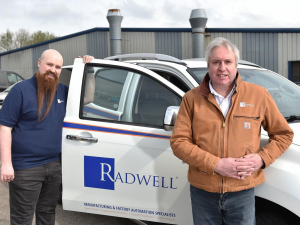

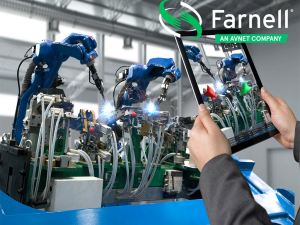

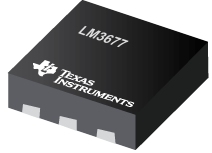


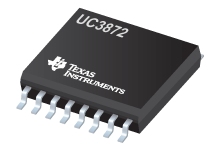

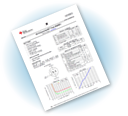

Write a comment
No comments